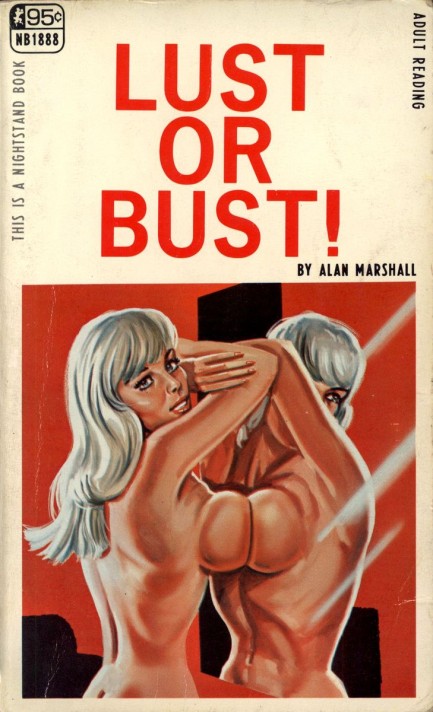| Vintage Pulp | Oct 6 2023 |

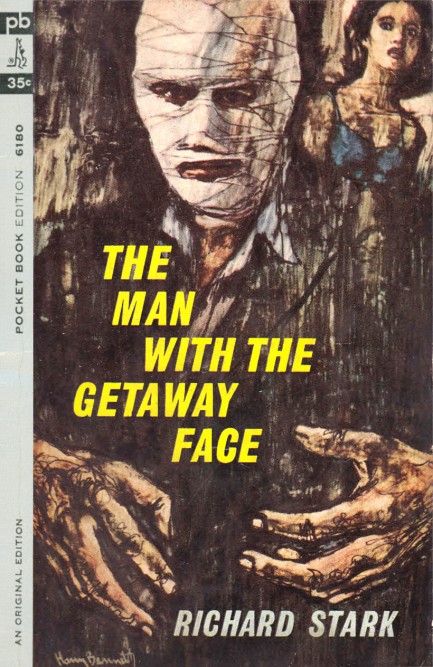
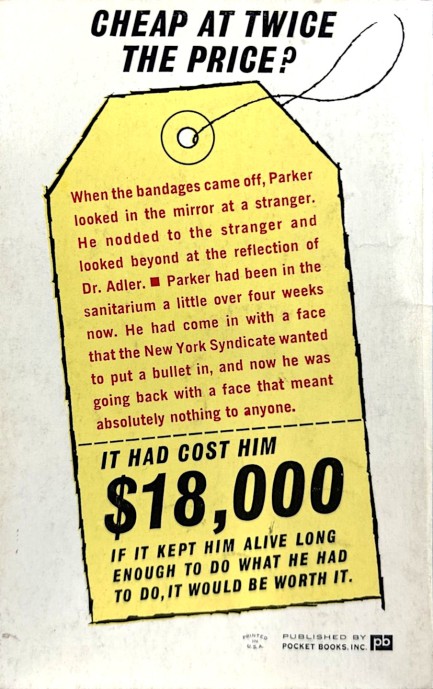
It took us a while but we've returned to Richard Stark, aka Donald E. Westlake, and his Parker series. We read entry one a few years ago. 1963's The Man with the Getaway Face is number two. The cover art here is by Harry Bennett and he basically copied his cover for book one, but changed the background and added the facial bandages. Those bandages reveal the premise—Parker has had a cosmetic surgeon change his face in order to help him evade “the Outfit,” who owe him in spades for various transgressions.
But Getaway Face doesn't focus on Parker's pursuers. Clearly, that's coming in the future. In the here and now he needs money, so he signs onto an armored car robbery, which, in adherence to the pulp law of tenuous connections turning into huge problems, boomerangs in such a way that his face doctor is murdered and Parker is blamed for it. His hands are full: deadly enemies, armed robbery, betrayal, murder, pursuit, and revenge. But he has very big hands. Nice work. We'll read book number three in the series soon.
| Vintage Pulp | Jun 19 2020 |

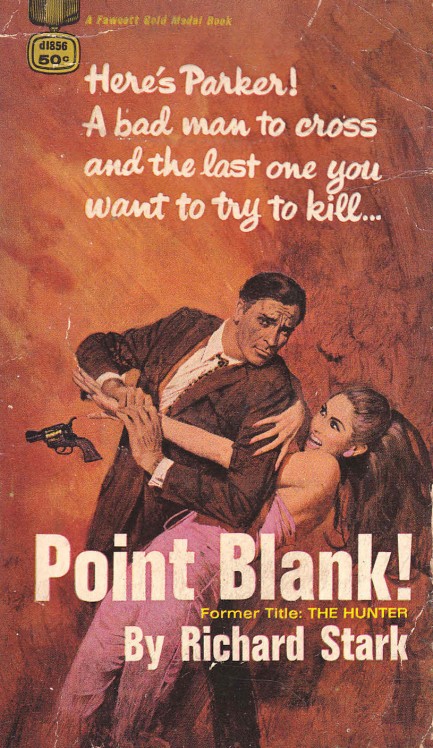
| Vintage Pulp | Feb 21 2020 |

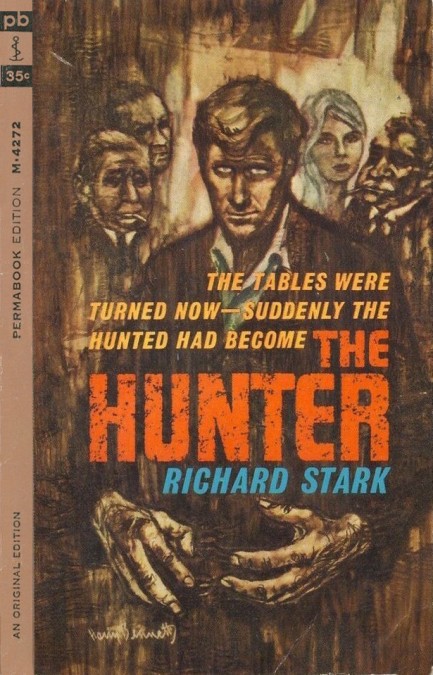
Richard Stark's, aka Donald E. Westlake's The Hunter, which was also published as Point Blank, is a landmark in crime literature, a precursor to characters like Jack Reacher. The standout qualities of this novel are its brutality and its smash cuts from set-piece to set-piece. As an example of the former, the main character, named Parker, basically scares a woman into committing suicide, dumps her body in a park, and slashes her face post-mortem as a way of foiling police attempts at identification.
The latter quality, the narrative's disorienting transitions, is exemplified by a chapter that ends with Parker's hands mid-murder around an enemy's throat, and the next opening with him sitting in another enemy's house, holding a gun on him as he walks through the door. Westlake stripped away every bit of transitional prose he could in order to create breakneck pacing and heightened menace.
Parker is not only dangerous, but is also emotionally barren. He feels nothing beyond the need to best his rivals. Permanently. Westlake's publisher knew The Hunter was something special, and convinced him to turn what was supposed to be a stand-alone novel into a series. Twenty-four entries in that series speak to its success. This first of the lot is highly recommendable. It came from Perma Books in 1962, and the excellent cover art featuring Parker's lethally large hands is by Harry Bennett.
| Vintage Pulp | Mar 16 2018 |


Donald E. Westlake wanted to call his mystery The Smashers by a different title. He preferred the name The Cutie—as in a hustler or crook who thinks he's cute, or clever. That would have suited the novel well, because the term is used probably two dozen times over the course of a story about a New York City mob fixer told by his boss to find the cutie who murdered a well-connected showgirl and made an improbable patsy of a hapless heroin addict.
With very little time and even less sleep the main character deals with cops, hoods, druggies, and politically plugged in one percenters, narrowing down a list of suspects to find the troublesome villain. The book reads a bit like a police procedural, but written from the opposite side of the fence. The killer, when finally revealed, comes as little surprise, but the book's mystery elements are not its most important anyway. What works here is the NYC atmosphere and the sense of sand running through the hourglass.
The cover you see above is from the rarer-than-rare edition put out in 1963 by the British publishers Four Square. If you want one it'll cost you about $100, which we think is overpriced. But we usually think that. Paperbacks to us are utilitarian. They're things you carry in a rear pocket. Also, you should never pay more than ten bucks for anything you're tempted to grab to smash a moth. But fret not—the Hard Case Crime version published in 2009 under Westlake's preferred title The Cutie is cheap, and, to many eyes, is probably the prettiest version.
| Vintage Pulp | Oct 23 2017 |

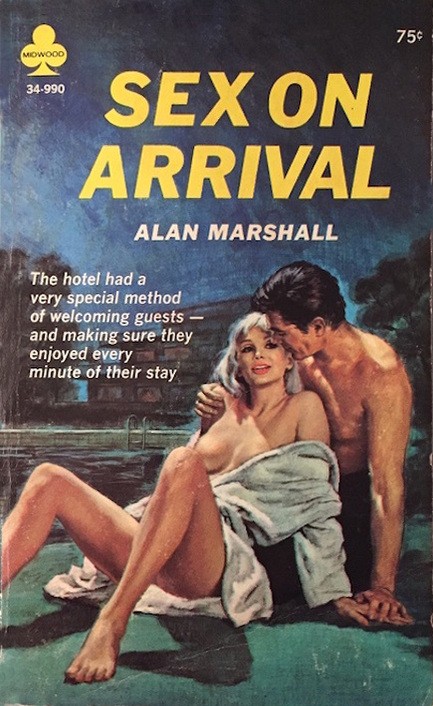
“It is at this point—still on the Great Plains, but with the towering mountains so close that it seems as if a man could reach out and touch them—that Skyline City occurs. The city itself has had many incarnations. At first it was no more than a stagecoach stop, a fort and a trading post. Then, with the advent of cattle ranching on the plains and the discovery of gold in the Rockies, it grew and prospered. It became a center of trade and finance—the capital of an enormous Western empire."
These days Denver is the capital of an enormous collection of immigrants from other states. More than three-hundred thousand came from California, mainly fleeing the west coast's culture, taxes and—ironically—its immigration. Such people would not recognize the city described in Sex on Arrival, but indeed, Denver was once a live-and-let-live paradise where the foolishness described by the author wouldn't have raised an eyebrow. And we're talking about during the eighties when we were young. We can't even imagine what the city was like in 1968.
Thus the book, though set before our time, is a bit of a nostalgia trip for us. On the whole it's a love story—with numerous sexual detours of semi-explicit variety. Semi explicit as in: “Then she wriggled around and her lips were on him. And the sensation radiated outward from his groin in stronger and stronger waves. It was almost more than he could bear. Almost more than any man could bear.” It's racy but not pornographic, and the interludes are short and widely spaced, as actual plot rears its ugly head.
Midwood sleaze titles were generally written under pseudonyms, and this particular author was probably Donald E. Westlake, who admitted producing close to thirty books as Marshall and Alan Marsh. But other authors used the Marshall name too. It isn't possible to know whether this is Westlake—at least not for us—by looking for hints of his style. Whoever wrote this worked fast, and the haste shows. But if you can pick it up cheap—and we mean real cheap—it's worth a read.
| Vintage Pulp | Oct 7 2015 |

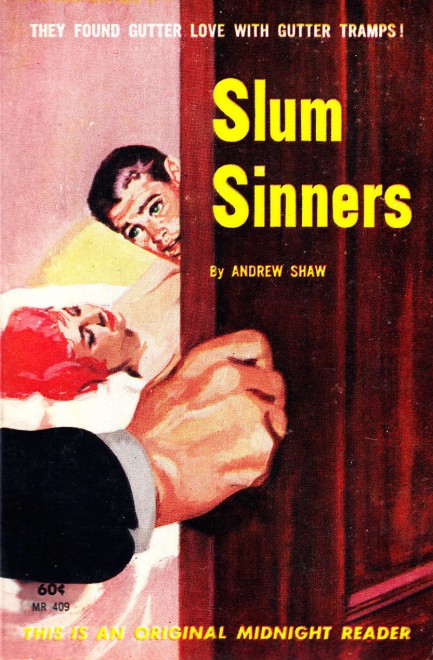
“They found gutter love with gutter tramps!” We’re guessing you get two gutterballs, then it’s someone else’s turn. Greenleaf Classics provides more fun coverness, this time from its Midnight Reader imprint, Slum Sinners, by Andrew Shaw, who was really Lawrence Block, at least in this case. Some sites say Donald E. Westlake wrote this, but authoritative sources (Block) say Westlake wasn’t Shaw until after 1963. This one is from ’62, so it’s Block. Wanna know what it's about? Check the rear cover, below. No artist info, but it’s probably Tony Calvano.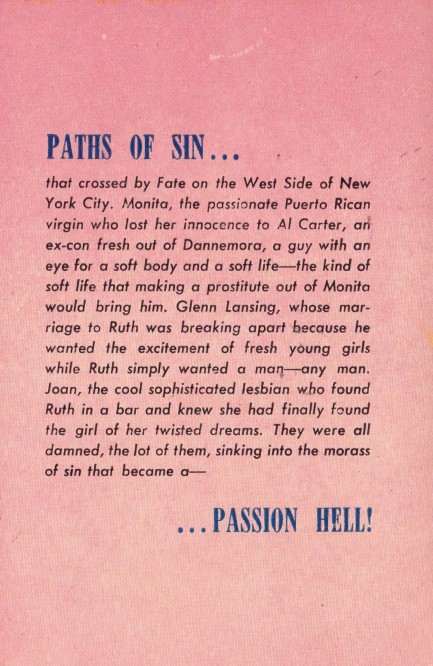
| Vintage Pulp | Jun 10 2015 |

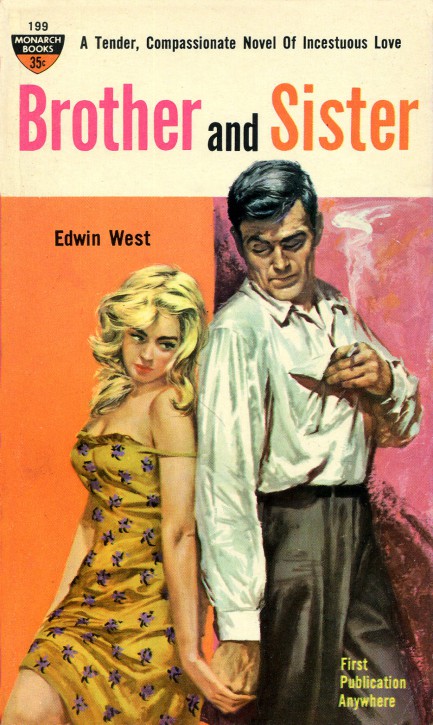
Brother and Sister is Donald E. Westlake writing incest sleaze under the pseudonym Edwin West, telling the story of a twenty-one-year-old meathead and his nubile teen sister who, er, come together on a deeper level after the accidental deaths of their parents. They hump like rabbits for a few weeks, deal with a villainous uncle, then morality triumphs and they die in the end. The male character here is in the Air Force, which is appropriate, because Westlake must have written this on autopilot. The Harry Schaare cover art shows a much older guy than the punk-ass troublemaker in the story, but it’s still quite nice. 1961 copyright.
| Vintage Pulp | Jan 14 2015 |

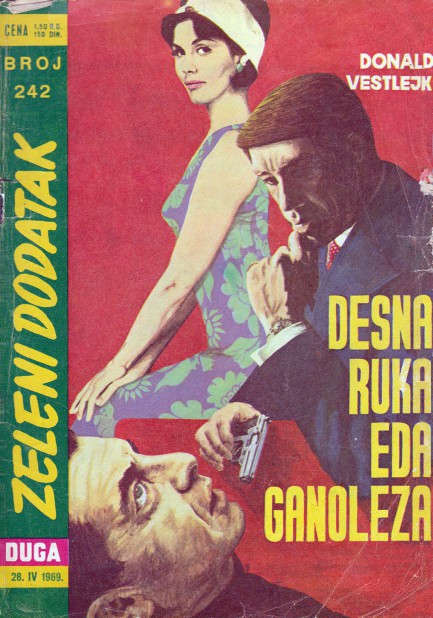
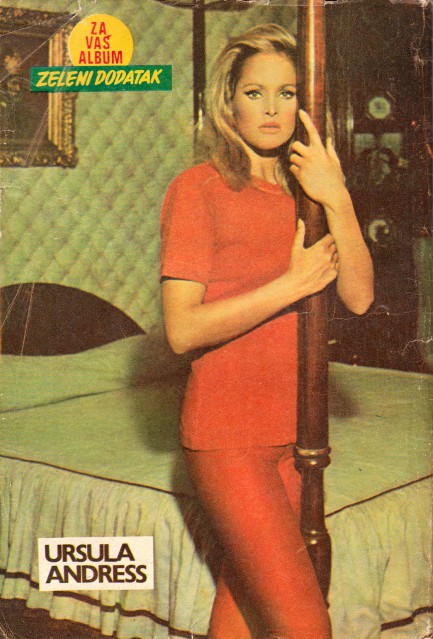
Duga was a publisher in the former Yugoslavia that reprinted many English language mysteries and thrillers into Serbian. The company’s name means Rainbow, and this novel from Donald E. Westlake was released in 1969 as a Zeleni Dodatak, or Green Edition, with Ursula Andress on the back. We have no idea why she’s there. We assume Duga put random hotties on the rear covers to entice buyers. The text there says “to your album,” which we like to think of as a mental album, like a spank bank, but that’s just us being rude. Obviously, the term refers to one’s collection of Green Edition back cover celebs. Collect them all and win a prize! That’s right! A weeklong trip to Zlatibor! Okay, now for what we don’t know. We don’t know which Westlake book this is. Desna Ruka translates from Serbian as “right hand,” but Eda Ganoleza translates as nothing—at least on the interfaces we used. A scan of the Westlake bibliography turns up no novel containing right hand in the title. So your guess is as good as ours. Doubtless people in Zlatibor know.
| Vintage Pulp | Dec 2 2014 |

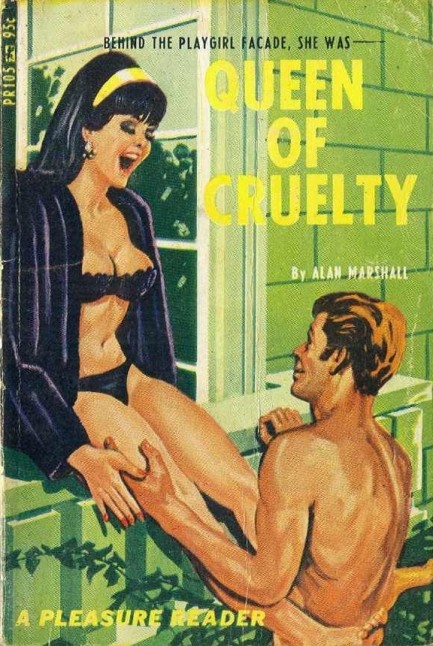
We love the outrageous art from Greenleaf Classics, which means we always have to circle back to it, this time to the above Pleasure Reader entry Queen of Cruelty, by Donald Westlake writing as Alan Marshall. This appeared in 1967 with Tomas Cannizarro assuming the cover duties. You can see a few of our favorite Greenleaf covers here, here, and here.
| Vintage Pulp | Oct 15 2012 |

